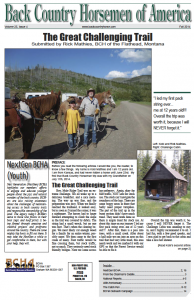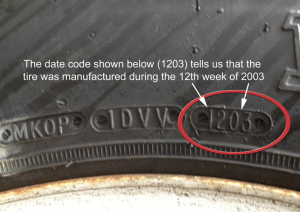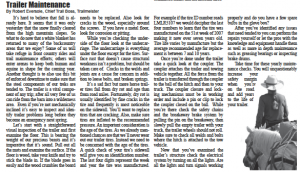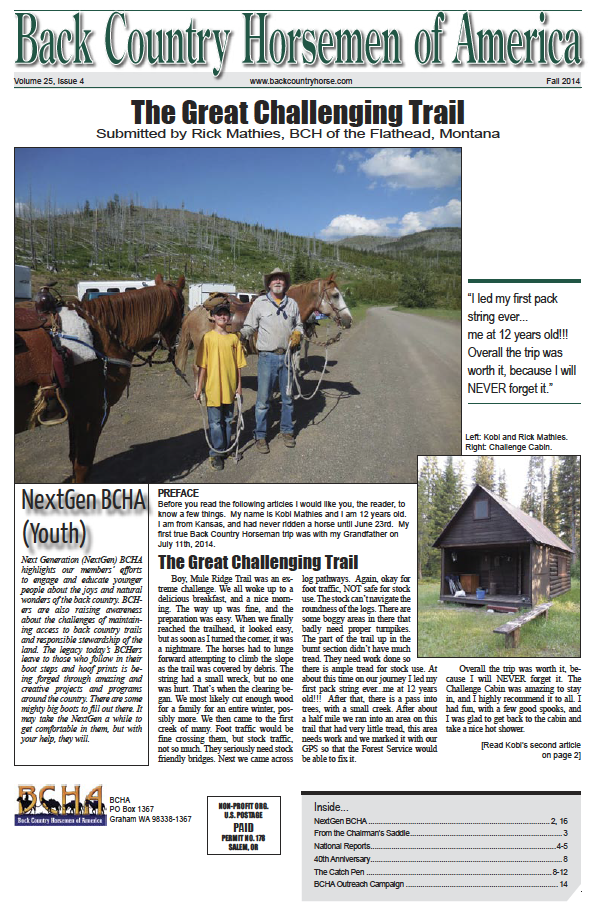 It’s hard to believe that fall is already here. It seems that it was only yesterday that the snow finally cleared from the high mountain slopes. So what to do now that a white blanket has returned to many of the backcountry areas that we enjoy. Some of us will take refuge in front country rides and trail maintenance efforts; others will enter arenas to keep both human and equine in shape for the coming year. Another thought is to also use this bit of enforced downtime to make sure that the steel components of our treks are tended to. The trailer is a vital component of any trip; after all very few of us can ride from the barn into a wilderness area. Even if you’re not mechanically inclined it’s easy to inspect and identify trailer problems long before they become an emergency next spring.
It’s hard to believe that fall is already here. It seems that it was only yesterday that the snow finally cleared from the high mountain slopes. So what to do now that a white blanket has returned to many of the backcountry areas that we enjoy. Some of us will take refuge in front country rides and trail maintenance efforts; others will enter arenas to keep both human and equine in shape for the coming year. Another thought is to also use this bit of enforced downtime to make sure that the steel components of our treks are tended to. The trailer is a vital component of any trip; after all very few of us can ride from the barn into a wilderness area. Even if you’re not mechanically inclined it’s easy to inspect and identify trailer problems long before they become an emergency next spring.
Let’s start with a straightforward visual inspection of the trailer and first examine the floor. This is bearing the weight of our precious beasts and it’s imperative that it’s sound. Pull out all the mats and examine the surface. If the floor is wood; take your knife and try to stick the blade in. If the blade goes in easily and the wood crumbles the board needs replaced. Also look for cracks in the wood, especially around the screws. If you have a metal floor, look for corrosion or pitting.
While you’re checking the underside of the floor look at the undercarriage. The undercarriage is everything under the floor except for the tires. Surface rust that doesn’t cause structural weakness isn’t a problem, but should be taken care of. Cracks in the welds and joints are a cause for concern in addition to loose bolts, and broken springs.
 It’s a sad fact but more horse trailer tires fail from dry rot and age than from road miles. Fortunately, dry rot is usually identified by fine cracks in the tire and frequently is most noticeable on the sidewall. You’ll want to replace tires that are cracking. Also, make sure tires are inflated to the recommended pressure. An important consideration is the age of the tires. As we already mentioned chances are that we’ll never wear out our trailer tires. Instead we need to be concerned with the age of the tires. A quick check of your tire’s sidewall will give you an identification number. The last four digits represent the week and year the tire was manufactured. For example if the tire ID number reads LMLR5107 we would decipher the last four numbers to learn that the tire was manufactured on the 51st week of 2007 making it now over seven years old. Tire life varies by manufacture but the average recommended age for replacement is between 7 and 10 years.
It’s a sad fact but more horse trailer tires fail from dry rot and age than from road miles. Fortunately, dry rot is usually identified by fine cracks in the tire and frequently is most noticeable on the sidewall. You’ll want to replace tires that are cracking. Also, make sure tires are inflated to the recommended pressure. An important consideration is the age of the tires. As we already mentioned chances are that we’ll never wear out our trailer tires. Instead we need to be concerned with the age of the tires. A quick check of your tire’s sidewall will give you an identification number. The last four digits represent the week and year the tire was manufactured. For example if the tire ID number reads LMLR5107 we would decipher the last four numbers to learn that the tire was manufactured on the 51st week of 2007 making it now over seven years old. Tire life varies by manufacture but the average recommended age for replacement is between 7 and 10 years.
Once you’re done under the trailer take a quick look at the coupler. The coupler attaches the trailer and towing vehicle together. All the force from the trailer is transferred through the coupler to the ball of the hitch and then to your truck. The coupler closure and locking mechanisms must be in working order and include a pin or clip to lock the coupler closed on the ball. While you’re there check the safety chains and the breakaway brake system. Check the breakaway system by pulling the pin on the breakaway, then slowly pull the empty trailer with your truck, the trailer wheels should not roll. Make sure to check all welds and bolts where the hitch is attached to the tow vehicle.
Now that you’ve examined the trailer’s structure check the electrical system by turning on all the lights. Are all the lights and turn signals working properly and do you have a few spare bulbs in the glove box?
 After you’ve identified any issues that need tended to you can perform the repairs yourself or let the pros with the knowledge and equipment handle them as well as more in depth maintenance such as greasing bearings or inspecting brake drums.
After you’ve identified any issues that need tended to you can perform the repairs yourself or let the pros with the knowledge and equipment handle them as well as more in depth maintenance such as greasing bearings or inspecting brake drums.
Take time for these yearly maintenance checks. You will unquestionably increase your safety margin when you’re on the road, and add years to the life of your trailer.


